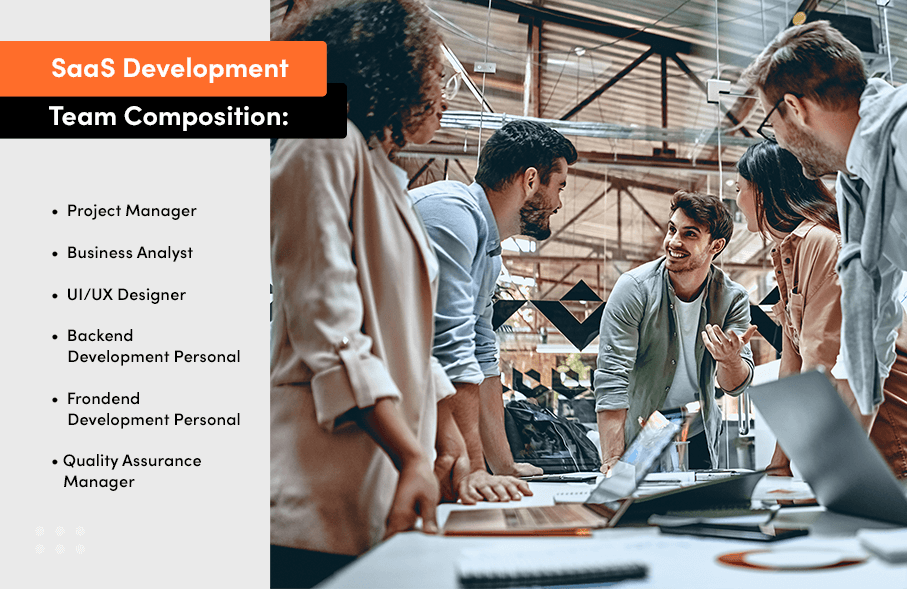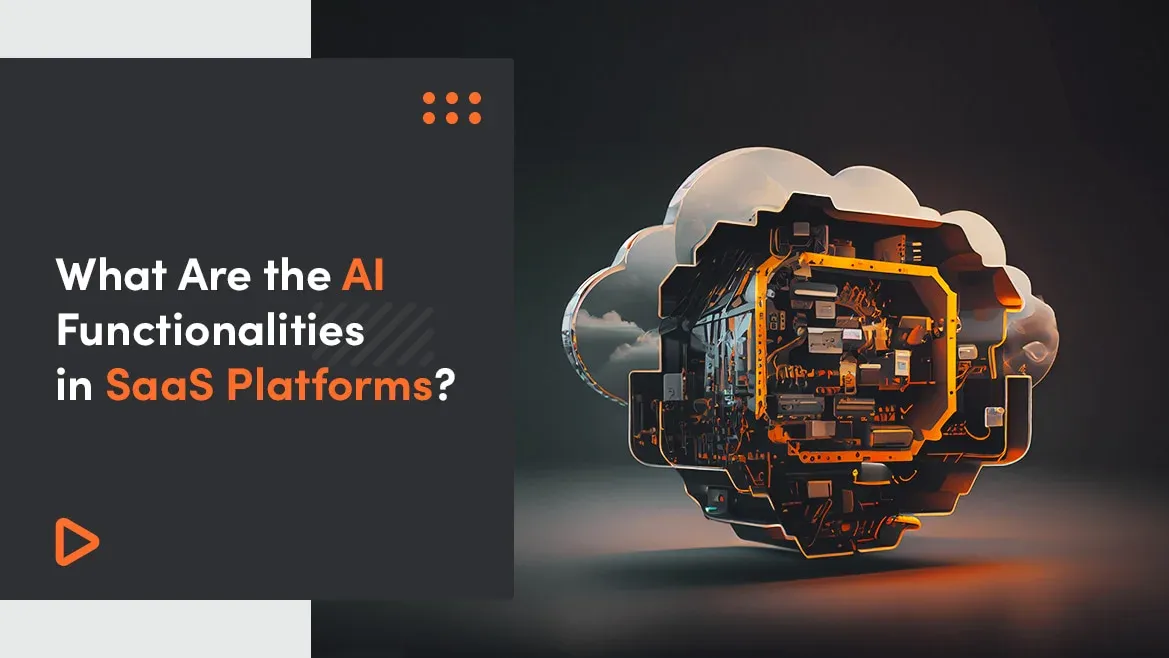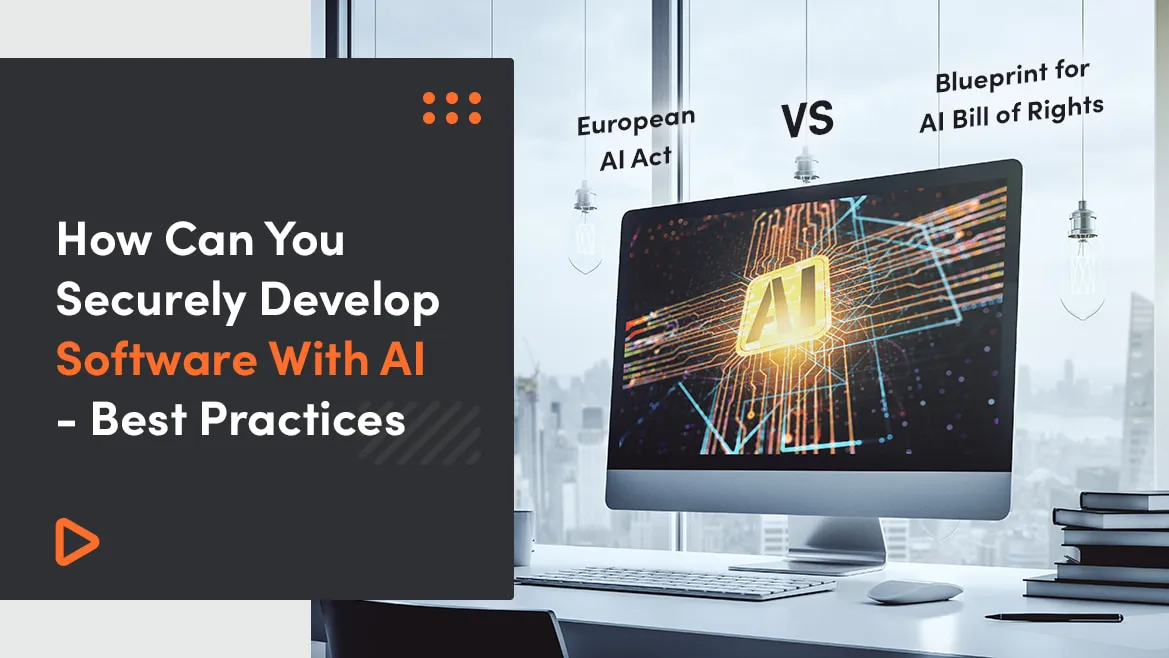SaaS, Software-as-a-Service (SaaS)—also known as cloud-based software, has become a very popular software delivery model thanks to its convenience. Business apps are accessible via a web browser without painful installations, or strict contracts is a blessing for many. Businesses can pay overtime instead of all at once. This makes SaaS applications more flexible and affordable enough for any budget.
SaaS can be applied in any industry for any operation like e-Commerce shops, Enterprise relations solutions, Customer relationship solutions, the Healthcare industry, Project management, or HR solutions. Those factors make Software as a Service an excellent solution for the provider company and users. This guide will show you how to build a SaaS product.
What will you learn from this article?
- Benefits and challenges associated with adopting SaaS for businesses
- What types of businesses can most benefit from SaaS applications?
- Composition and roles within a SaaS application development team.
- Key steps involved in developing a SaaS application from scratch.
- What are the benefits of starting with an MVP?
- What are the pricing models available for SaaS products and which will be more advantageous?
- What are the key SaaS metrics that businesses should track?
- Special checklist of SaaS application development.
What is a SaaS product?
Software as a service is a new sales model that has been replacing traditional software licenses for quite some time now.
A SaaS product is online software that all users have access to.
To give you an example, the most popular SaaS companies are DropBox and Google Apps. To use SaaS platforms users do not need to install anything on their devices since the application is hosted by the server provided. Any updates and further maintenance are performed by the host side and is invisible to the user. The product is not sold with a lifetime license but is distributed via a subscription model.
Advantages of SaaS

The biggest and most obvious advantage of SaaS solutions is that there is no need to have any special equipment. Apart from that, cloud-based web applications give you:
- security: your data is stored in a safe place.
- scalability: upgrades or downgrades can easily be done when necessary.
- reliability: servers can be located around the world, which means if one of them goes down, the rest continues to work.
- regular revenue for developers.
- lower costs: SaaS provides lower development costs since there is no need to buy and maintain expensive hardware.
- potentially larger customers base due to lower costs and trial periods.
- accessibility: the solution is available at all times and is only limited to an internet connection.
Try our developers.
Free for 2 weeks.
No risk. Just results. Get a feel for our process, speed, and quality — work with our developers for a trial sprint and see why global companies choose Selleo.
7 Types of SaaS applications
There are many available options for cloud-based applications. Some of the most popular ones are as follows:
- 1. E- Commerce software helping to run a business online including product management and payment integrations like BigCommerce or Shopify
- 2. Vertical SaaS - products specific to a particular niche optimizing business processes
- 3. Collaboration software helping in communication and information sharing eg. Miro
- 4. CRM (customer relationship management software) aiming to automate sales and marketing processes eg. HubSpot
- 5. ERP (enterprise resource planning software) managing business processes like Oracle
- 6. Project management software aiding PMs in collaborating with their teams eg. Jira or Workflow
- 7. Billing software, which covers all payment procedures with a single click like Tipalti
SaaS app development team composition
To develop cloud-based SaaS software, specific job roles need to be filled. Here's what the composition of the SaaS development team will look like.
Project Manager
The role is responsible for planning the software development process, assigning team members tasks, and following up on their progress. The product manager will ensure that progress meets the set timeframe and requirements.
Business Analyst
This particular job role will be responsible for analyzing the software's position in the market and documenting its progress, assessing and building a viable business model for the client/company.
UI/UX Designer
One of the main Job positions is UI/UX designing and implementing the application's interface and experience.

Backend Development Personal
A person who is responsible for managing all tasks on the server side of the SaaS app is a Backed Developer. He/She is responsible for ensuring the app functions as planned using scripting languages.
Frondend Development Personal
It is a job position that works on the client side, transforming the design into code using Javascript or any other language to create frameworks.
Quality Assurance Manager
It is a job for a person who tests the SaaS software for defects, bugs, and issues and reports them to be fixed by the team.
The number of team members can vary based on the project size and development budget. You may need other specialists or technical staff as well. In addition, if you are leaning towards methodology DevOps for SaaS projects, you will also need a DevOps engineer. At Selleo, you can find a team of highly specialist and experienced professionals to do the job.
SaaS product development process: How to build a SaaS product from scratch
1. Market analysis - validate your idea
The long-term success of your product depends on good market research, which gives you an insight into your competitors and the demands of your potential clients. This research will give you validation and help you avoid repeating the mistakes of those who failed. You need to make sure your target customers are willing to pay for your product and that your offer meets their needs. Make sure your business model gives them clear and recurring benefits and is attractive to a large audience.

2. Discuss the SaaS product requirements
SaaS solutions have some things in common, so a clear plan of customization, integration options and security is essential. In a SaaS model, it is crucial to ensure maximum security as it is the foundation of a good solution. Consumers’ requirements are constantly evolving so you should be able to adjust to them. Your software should also be built in such a way to handle the increasing amount of users without slowing down.
3. Define the MVP
Having a Minimum Viable Product means figuring out what are the basic core features that will bring value to your customers with minimal costs from your side. An MVP is what the early testers will try out and what will be developed into the final product.
An easy way to define the minimum viable product is to answer questions like what is your user persona, what are the actions the users have in order to solve their problems and what solutions you can propose.
Read also: Why MVP Development Should Be Outsourced
4. Choose your pricing model
There are different pricing models for SaaS solutions(that can greatly influence your product’s popularity. The pricing strategy should be adjusted to your target users’ needs.

- usage-based pricing when users pay based on the amount of usage.
- pricing per feature when you offer different sets of features.
- freemium: a free version with limited features with the ability to upgrade.
- pricing per active user when you charge per user for the entire product.
- flat rate when you offer the entire product or bundle of features under one price, paid on a monthly or yearly basis.
It is common for SaaS products to be offered with an initial low price, free trial or promotional prices.
5. Technical aspects
This is the point where you need to determine how your Saas solution will be built. You should talk to professionals who will help you define which programming language, tools and platforms are required to create your SaaS product. It is important to have in mind both the long-term product and the MVP.
6. Find a SaaS development vendor and create a development team
Now it is time to find or create a development team that will take care of everything in SaaS development process. Here you can choose to either create a team out of people in your company (providing you have them) or outsource the development fully or partially. Outsourcing to a fully-fledged team will give you lots of advantages and will allow you to focus on business processes like marketing. You can read more on outsourcing in the blog post 4 Reasons Why You Should Consider Outsourcing SaaS Development.
7. Know your budget
After all the steps, by this point, you should have an idea of how much the SaaS application development will cost you. Take into account the time needed to create your product and the time needed to start selling. Plan your budget carefully, remembering possible changes and delays. It is better to think about the worst-case scenario and be surprised than the other way around.
How to convert an existing app to a SaaS model
To convert your app to a SaaS business you have to go through 4 major steps:
1. Analyse
Evaluate your application potential compared to existing solutions on the market. Go through its features and integrations. Think about whether you want to introduce a new features model or some of it you can get rid of. Think about the conversion process like giving a second life to your product as cloud SaaS.
2. Build a team
Converting to a SaaS platform means that the way you and your team maintain and support the product will change. Train your team in advance, so they are prepared for those changes. You can also look for some external support and outsource SaaS app development.

3. Choose a cloud provider
One essential point that differentiates the development process of SaaS apps from traditional software development is hosting. If your product will be available online you need to host it in a cloud environment. Pick a few providers and compare them paying special attention to team experience, number of users and customer service.
4. Migrate
The migration itself might take some time, so be patient. This will depend on the complexity of your product, your team’s expertise and necessary integrations. **Hiring **SaaS software development experts will definitely shorten the development time.
Also, recall that in some cases moving project to a new technology or rewriting backend/frontend may be necessary, so take it into consideration in estimations.
An example of a conversion from on-premise software to a SaaS business model can be Adobe. Back in the day, you were able to buy a physical copy of Photoshop, whereas now it is connected to a monthly subscription plan that can also gain access to other Adobe products. The fee is much smaller than the cost of a physical copy of the program and allows you to update it. What is more, you can get a free trial period to test out Photoshop with no bounding contracts.
SaaS Application Development Checklist
1. Market Research and Validation:
- Identify the target audience and potential customer base.
- Analyze competitors and their offerings.
- Validate the demand for the SaaS product through surveys, interviews, or pilot testing.
- Determine product-market fit.
2. Product Strategy and Planning:
- Define a clear value proposition.
- Develop a unique selling proposition (USP) that differentiates your product.
- Outline the core features and functions.
- Establish a scalable business model.
3. Technology and Architecture Selection
Challenges: Address common technical challenges such as ensuring multi-tenancy, handling large data volumes, maintaining security in a distributed environment, and ensuring high availability and scalability.
- Choose the appropriate programming languages, frameworks, and tools. For example programming tools: Specify the most commonly used or recommended programming languages and frameworks that are particularly suited for SaaS applications, such as JavaScript with Node.js for backend development or React for frontend development.
- Select a reliable cloud provider for hosting.
- Design a scalable, modular-based software architecture.
- Ensure data security and compliance with industry standards.
4. Team Formation
- Assemble a multidisciplinary team including project manager, developers, designers, and QA engineers.
- Clearly define the roles and responsibilities of each team member.
5. Minimum Viable Product (MVP) Development
- Identify the core features needed for the MVP.
- Create a product roadmap with milestones and timelines.
- Develop the MVP using agile development methodologies.
6. Pricing Strategy
- Research various saas pricing models (freemium, usage-based, feature-based).
- Align the pricing strategy with target customers' needs and market trends.
- Test pricing models with potential customers.
7. Quality Assurance
Expand on the testing protocols to include API testing and integration testing, which are critical in a SaaS setup where third-party services and APIs play a significant role.
- Implement rigorous testing protocols (unit, integration, and usability tests).
- Automate testing where possible.
- Conduct user acceptance testing with a subset of potential customers.
8. Marketing and Launch
- Develop a marketing plan that includes SEO, content marketing, and paid ads.
- Launch a landing page or beta program for early adopters.
- Gather user feedback to refine the product pre-launch.
9. Customer Support and Onboarding
- Develop comprehensive onboarding guides, tutorials, and FAQs.
- Set up a customer support system (ticketing, live chat).
- Ensure the sales and customer support teams are trained.
10. Post-Launch Maintenance and Improvement
- Monitor key performance indicators (KPIs) like churn rate, LTV, and NPS.
- Implement continuous improvement based on user feedback and analytics.
- Plan and release regular updates to maintain product relevance.
11. Legal and Compliance
- Ensure compliance with data protection regulations (GDPR, CCPA).
- Draft terms of service and privacy policies.
- Protect intellectual property through patents or trademarks, if applicable.
What are the key SaaS metrics you should be tracking?
When you are a business owner you obviously will want to know how it performs. There are many metrics that can inform you about the state of your product. Although using tools like Google Analytics or Hotjar is helpful they are not always sufficient.
Most SaaS company focus on KPIs - Key Performance Indicators like:
- monthly or annual revenue
- CAC (cost of acquiring a customer)
- LTV (customer lifetime value) which shows the revenue generated by a customer over the lifetime of their subscription
- NPS (net promoter score) the value customer gain from your product
- customer churn - the percentage of customers unsubscribing on a monthly basis

When analysing your metrics remember to divide them into low-touch SaaS and high-touch SaaS. In low-touch products, the software allows subscription via website, e-mails etc with minimum interaction from the sales team. In high-touch products, the sales team is heavily involved in processes like customer acquisition, onboarding and maintenance.
Summary
Although building a cloud-based Saas application is not for every business case the model itself is gaining popularity because of its benefits. Many big enterprises switch to this distribution model like Adobe Photoshop or Microsoft Word. It is also worth acknowledging that some of the widely popular applications like Spotify, Slack or Grammarly were built as SaaS apps from the beginning.
No matter if you are considering converting to SaaS or developing a new SaaS product and would to outsource the Saas project development, our SaaS software development team can help you.





